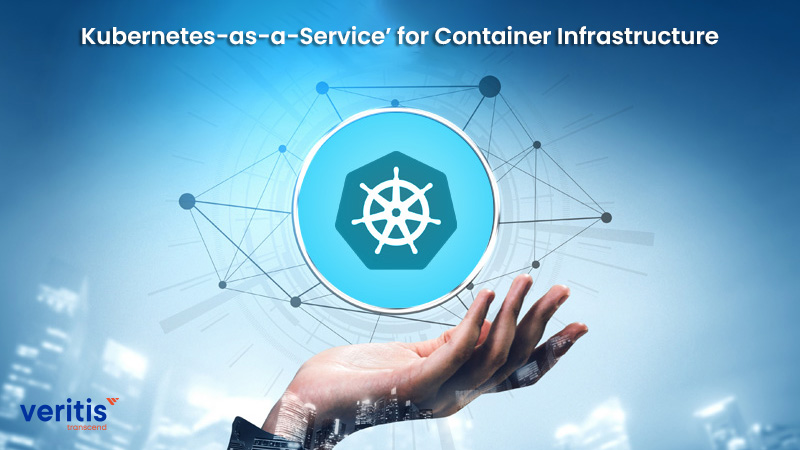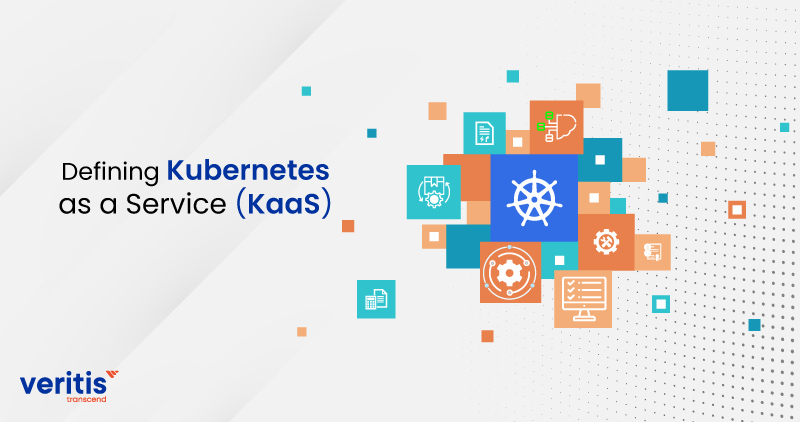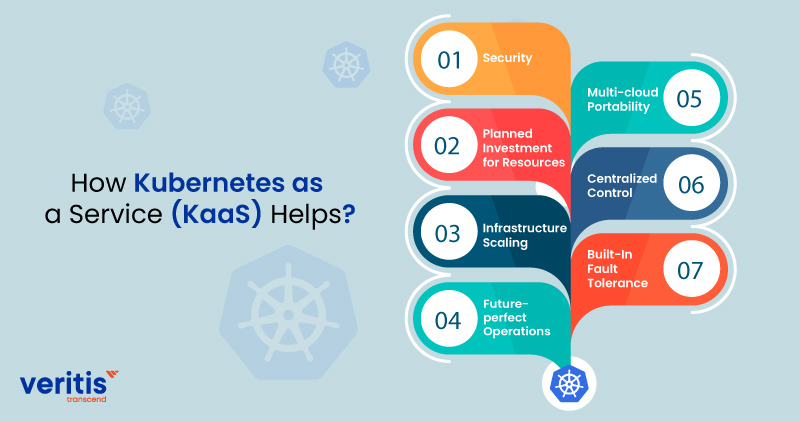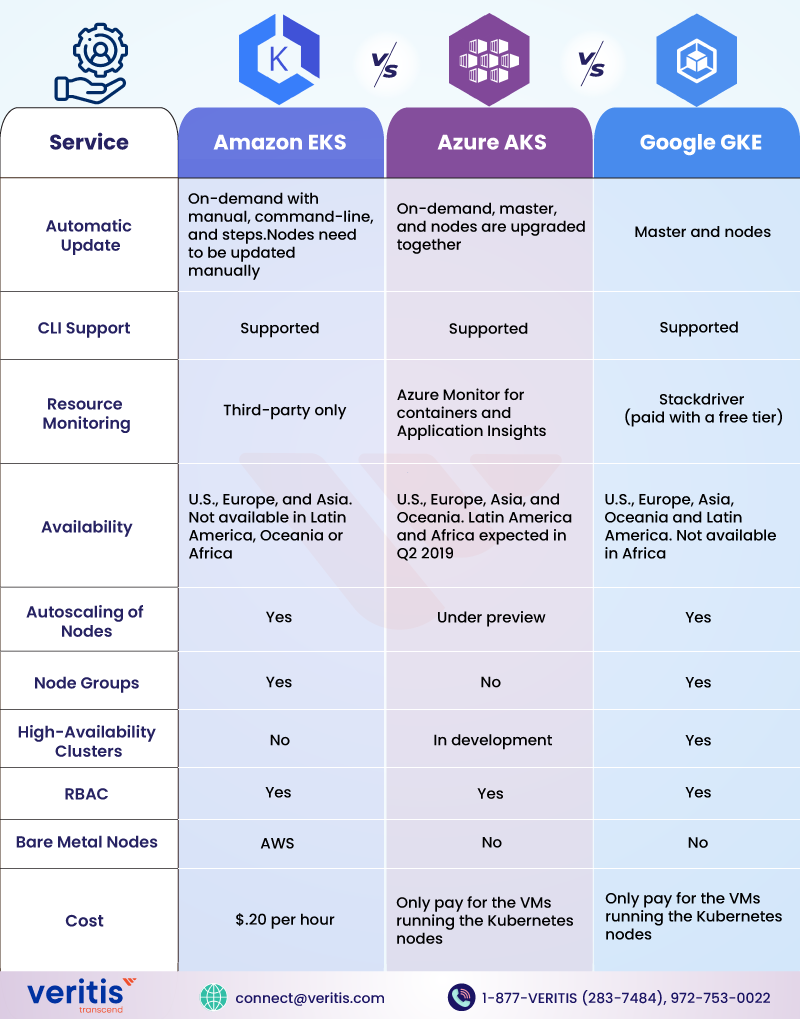
The speed of application development and delivery is where the industry’s success lies in modern IT.
The modern IT industry is transforming to achieve a higher maturity level for enhanced app delivery. One technology that made this process easier is ‘Containers’.
As a lightweight model, container-based architecture has simplified application development, creating sufficient scope for independent and portable applications.
Containerization has become increasingly popular over the past few years as businesses look for ways to build and deploy applications faster and more efficiently. Containers provide a lightweight and portable way to package applications and their dependencies, making it easy to move them from development to production environments. However, containerization also introduces new deployment, scaling, and management challenges. That’s where Kubernetes comes in.
As a lightweight model, container-based architecture has simplified application development, creating sufficient scope for independent and portable applications. However, the success of container architecture is purely dependent on the tools and resources associated with it, mainly Kubernetes and Docker.
Kubernetes-as-a-Service (KaaS) is a cloud computing model that provides a managed environment for deploying, managing, and scaling Kubernetes clusters. Kubernetes is an open-source container orchestration platform that automates the deployment, scaling, and management of containerized applications. KaaS is designed to simplify the deployment and management of Kubernetes clusters, allowing businesses to focus on their applications rather than the underlying infrastructure.
While every technology service in the advanced stage is transforming into the ‘as a service’ model, Kubernetes is also gaining popularity as the Kubernetes-as-a-Service (KaaS) owing to its wide range of benefits to the container ecosystem.
Defining Kubernetes as a Service (KaaS)

Kubernetes is a container orchestration platform that automates many tasks in deploying and managing containers at scale. It provides a way to deploy and manage containerized applications across a cluster of machines, providing high scalability and availability. However, Kubernetes can be complex to set up and manage, especially for organizations without a dedicated DevOps team.
This is where Kubernetes-as-a-Service comes in. KaaS providers offer managed Kubernetes clusters that handle many of the complexities of running Kubernetes at scale. Kubernetes as a Service (KaaS) is a technology solution that offers expert support in Kubernetes services, helping customers transition to cloud-native, Kubernetes-based platforms and manage the lifecycle of Kubernetes clusters.
This primarily includes migrating workloads to Kubernetes clusters and deploying, managing, and maintaining them in the consumer data center.
Useful link: Managing Kubernetes Applications Through Terraform and AWS EKS
Why Kubernetes as a Service?
Most organizations are increasingly moving their workloads to container platforms to achieve a competitive edge in the digital trend. However, managing these containerized workloads is challenging when integrating container orchestration platforms.
One critical feature of KaaS is its container networking capabilities. Kubernetes offers a robust networking model that enables containers to communicate with one another across a cluster and with external services. Additionally, KaaS providers offer managed networking solutions that simplify the configuration and management of Kubernetes networking, enabling businesses to focus on their applications rather than the underlying infrastructure.
Most organizations are increasingly moving their workloads to container platforms to gain a competitive edge in the digital age.
However, managing these containerized workloads is difficult without integrating container orchestration platforms.
At this point, Kubernetes offers to extend support as the market’s leading container orchestration tool. These containerized workloads can be applications or componentized into microservices (hosted by containers), API servers, storage units, and backend entities.
Managing them at scale, along with timely updating of stacks in line with policy changes and at the pace of innovation, may be an arduous task without the support of all-around expertise. That comes as Kubernetes as a Service (KaaS) is a holistic approach to managing containerized workloads.
Useful link: Kubernetes Adoption: The Prime Drivers and Challenges
How Does Kubernetes as a Service (KaaS) Help?

KaaS offers custom solutions considering the organization’s budgetary constraints and data center capacity.
1) Security
KaaS ensures a policy-based user management system that gives infrastructure access to users according to their business requirements. During the process, KaaS providers follow the necessary security policies to ensure security is not compromised. In contrast, an average Kubernetes implementation exposes API servers to the Internet, thus making them vulnerable to possible security threats.
2) Planned Investment for Resources
Whether managing KaaS terminals or physical resources to handle storage and networks within the infrastructure, a customized KaaS solution presents an overview of the existing architecture. It enables organizations to plan investments in their resources perfectly.
3) Infrastructure Scaling
The high-level automation possible with KaaS makes it easy to scale infrastructure at any point to any level. Kubernetes provides a way to scale containerized applications horizontally by adding or removing nodes from a cluster. KaaS providers make it easy to scale Kubernetes clusters up or down as needed, providing high scalability and flexibility. This is particularly important for businesses with rapidly changing workloads, as they can quickly scale up or down to meet demand. This saves time, resources, and the admin team’s efforts responsible for the task.
4) Future-perfect Operations
Container-based workload management demands continuous and rolling updates. Kubernetes can satisfy this requirement as an orchestration tool. However, this strategy may not fit specific organizations’ data center use cases, as best practices are still evolving to keep up with innovation speeds.
KaaS can address this challenge with its pre-defined policies and procedures, which can be customized to the changing needs of all organizations using Kubernetes.
5) Multi-cloud Portability
Given the portable nature of container applications, in the multi-cloud era, they will have to run in both private cloud and public clouds. Moreover, access to existing apps will be shared.
In such a situation, KaaS providers manage and portability apps, allowing the developer to focus on building apps.
Kubernetes-as-a-Service is also well-suited to hybrid environments. Many businesses have complex IT environments, including on-premises, public cloud, and private cloud resources. KaaS providers offer managed Kubernetes clusters that can run on various infrastructures, ranging from on-premises data centers to public cloud providers such as AWS, Azure, and Google Cloud Platform.
6) Centralized Control
KaaS allows admins to manage Kubernetes clusters from a single UI terminal. This allows administrators to have full visibility of all cluster contents/components, and to continuously monitor their performance.
They may also apply different frameworks to the Kubernetes stack, trigger alerts to Kubernetes clusters, and add security patches to detect possible vulnerabilities. Admins can connect with any container using a single medium of contact.
7) Built-In Fault Tolerance
Another benefit of KaaS is its high availability. Kubernetes provides built-in fault tolerance and self-healing capabilities, making it highly resilient to failures. However, managing a highly available Kubernetes cluster requires significant expertise and resources. KaaS providers address numerous challenges associated with managing highly available clusters, offering businesses a reliable and resilient infrastructure for their containerized applications.
KaaS also benefits DevOps productivity. Kubernetes requires significant expertise to be managed effectively, and many organizations need help identifying the resources they need to manage their clusters. KaaS providers manage many management tasks in Kubernetes, freeing DevOps teams to focus on more strategic tasks like application deployment and optimization.
Key Considerations in Kubernetes as a Service
Embracing KaaS brings a wave of agility and efficiency, promising a brighter future for organizations. However, it’s crucial to be aware of the trade-offs and responsibilities that come with it.
1) Visibility vs Convenience: Managed services simplify upgrades and control plane management, but they can limit visibility for compliance-heavy industries.
2) Vendor Lock-In Risks: Choosing a single cloud provider may restrict future flexibility. Mitigation strategies include adopting multi-cloud tools or using platforms with consistent APIs.
3) Shared Responsibility Model:
- Providers handle: Control plane, patches, auto-upgrades.
- You handle: Workload security, RBAC policies, network segmentation, and image scanning.
4) Multi-Cloud & Edge Deployments: Organizations seeking true portability utilize hybrid solutions, such as OpenShift or Kubernetes, which enable consistent operations across public clouds, private data centers, and edge environments.
Useful link: How to Optimize Kubernetes Autoscaler to Better Business
Real-World Use Cases of Kubernetes as a Service
Kubernetes as a Service is more than just container orchestration; it’s a business enabler. Here are some real-world scenarios where organizations are leveraging KaaS:
- For Developers: A software team used Google Kubernetes Engine (GKE) to spin up test clusters in minutes, significantly reducing setup time from days to hours. This efficiency boosts accelerated CI/CD pipelines and reduces time-to-market, making the team more productive.
- For Startups & SMBs: By adopting Azure Kubernetes Service (AKS) with its no-cost controller nodes and built-in auto-scaling, startups reduced operational overhead and ensured predictable costs as they scaled their applications.
- For Enterprises: Large enterprises are strategically leveraging Red Hat OpenShift and VMware Tanzu to run hybrid or multi-cloud Kubernetes clusters, thereby gaining a competitive edge through flexibility across on-premises and public cloud environments.
Kubernetes Services: AWS vs Azure vs Google Cloud
With the increasing adoption of Kubernetes services, cloud service providers have become pivotal in providing advanced features to businesses, enabling them to easily manage their Kubernetes clusters and applications.
Amazon Web Services (AWS), Microsoft Azure, and Google Cloud Platform (GCP) are the leading cloud platforms on which enterprises are deploying their Kubernetes workloads.
Managed Kubernetes offerings from these three cloud giants are Amazon Elastic Kubernetes Service (EKS), Azure Kubernetes Service (AKS), and Google Kubernetes Engine (GKE).
Here’s a comprehensive comparison of the three managed Kubernetes service offerings:

Comparison of Kubernetes as a Service Providers
| Provider | Key Differentiators |
| GKE (Google Kubernetes Engine) | Auto-upgrades, built-in operations suite, seamless Google Cloud integration |
| EKS (Elastic Kubernetes Service) | Tight AWS ecosystem integration with CloudWatch, IAM, and VPC |
| AKS (Azure Kubernetes Service) | No-cost masters, Azure AD integration, built-in CI/CD capabilities |
| OpenShift / Tanzu | Enterprise-grade tooling, hybrid and multi-cloud flexibility |
| Kazuhm (Edge/Agnostic) | Hybrid/on-prem deployments with a unified management interface |
Conclusion
KaaS offerings include more such benefits. It is best suited for organizations of all sizes with containerized workloads or those planning to do so in the future. KaaS can enhance your overall container infrastructure by optimizing the efficiency of Kubernetes clusters.
With the benefits of Kubernetes, various companies are integrating KaaS into their infrastructure. The orchestration platform brings a lot to the table, and it can be challenging to utilize all its advantages. This is one of the many reasons that most opt for Veritis to integrate KaaS with their infrastructure. Stevie Award winner Veritis has been the preferred choice for companies of various sectors. Whether in aviation or services, we have developed solutions that meet our clients’ requirements. Reach out to us to learn more about how you can benefit from Kubernetes.